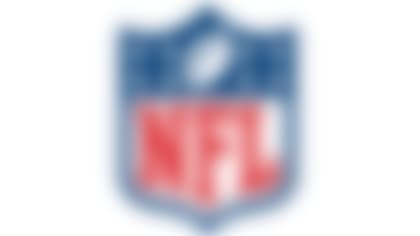No general manager would say, "We prefer to build our team through veteran free agency," but the first few weeks of the free agency period are still some of the most important on the NFL schedule. With a handful of moves -- adding Dominique Rodgers-Cromartie in 2014 and Damon Harrison, Janoris Jenkins and Olivier Vernon in 2016 -- the New York Giants transformed themselves from divisional also-rans into playoff contenders. Kelechi Osemele turned a very good Raiders offensive line into the league's second-best. Eric Weddle helped bring the Ravens to within a game of the playoffs.
All of them were worth every penny. But they were sandwiched in free agency classes full of regrettable deals. This year's class comes with its own potential pitfalls, which is why I'm here to provide you with a list of free agents who could be overpriced and cause your team to miss the mark.
First, a disclaimer: This is not to suggest anything about the quality of the players listed below. But with the free-agent market shaping up to be a seller's market (with deep-pocketed teams vying for a few excellent players), some risky propositions might be made.
Here's how I see it, with players listed in no particular order:
Mike Glennon, quarterback
In December, ESPN's Adam Schefter suggested the former third-round pick with 18 NFL starts to his name "could fetch $13-15 million per year on his next deal," which caused widespread outrage among nameless eggs on Twitter, but should not have. There is a lack of quality starters on the market and a handful of teams that need one. Over 21 lifetime appearances, Glennon has completed nearly 60 percent of his passes with a 2:1 touchdown-to-interception ratio (30:15 in total) and an average passer rating hovering around 90. My hesitation regarding Glennon, however, comes when looking at some of the other available options. If you're devoting that level of resources already, why not commit fully and do whatever it takes to woo one of the more proven options on the market? Teams that find themselves in this market more often than not almost always seem to be in a perpetual haze, a few steps below where they need to be.
Dontari Poe, defensive tackle
Contract site Spotrac.com calculated Poe's market value and suggested he's worth a five-year, $61 million deal with an average value of $12.1 million per year, though no one knows how exactly the interior tackle market will form, given the lack of competition (presuming Kawann Short is franchise-tagged by the Panthers). (The site used contracts given to Muhammad Wilkerson, Gerald McCoy and Marcell Dareus in its calculation.) Damon Harrison, who signed a five-year, $46.25 million deal last year, was a revelation for the Giants, with his absence from the Pro Bowl constituting a glaring snub. Would Poe be worth $3 million-plus more per year than someone like Harrison? According to Next Gen Stats, Harrison's max speed is slightly quicker, but Poe can cover more ground. Personally, I think Poe is a slightly more versatile player, as he played a majority of his snaps in a defense that featured just two down linemen, three linebackers and six defensive backs. As my colleague Kevin Patra noted, his highs can be higher. You're simply betting that a long-term commitment to Poe will be more fruitful than, say, a short-term commitment to some of the other, cheaper veterans on the market, like Nick Fairley. Fairley can do less and is more effective on a bigger front, but could be significantly less costly.
For the record: If I were, say, the Colts, then I'd have to do it. But for a team looking at anything less than an extreme makeover, it might not be worthwhile.
DeSean Jackson, wide receiver
Jackson's home-run ability cannot be discounted. I'm convinced the extra dimension he added to an already punchy Redskins offense helped lift Kirk Cousins from good starter to top-of-market quarterback this offseason. But it's going to be difficult to pinpoint the value of a 30-year-old speed wideout, because there aren't a ton of accurate comparisons out there. He is going to be worth more than the two-year, $11.5 million deal Mike Wallace signed with Baltimore last year. But will alleged competition between the Buccaneers, Eagles and others looking to make a splash drive him up and over the two-year, $22 million deal Larry Fitzgerald signed with the Cardinals when he was 31? I'm not concerned about Jackson's speed diminishing (according to Next Gen Stats, his top-end speed actually improved from 2015), but he does need a very specific set of circumstances to succeed. Will it be worth $8-11 million to find out?
Johnathan Cyprien, safety
Cyprien picked the perfect time to have a bounceback season. His 2016 campaign with Jacksonville was easily among the top 10 for his position (Pro Football Focus rated him the seventh-best safety in football), and he enters the market without a ton of competition (presuming the Chiefs apply the franchise tag to Eric Berry). An interesting contract comparison would be another former second-round pick, Broncos safety T.J. Ward, who inked a four-year, $22.5 million deal back in 2014. But with the raises in the cap ceiling over the past three years, one would imagine Cyprien will fetch more on the open market. Would that type of commitment be worth the risk? Cyprien undoubtedly has a high ceiling, but he will now be thrust into a different system without the same responsibilities. The safety position is notoriously underpaid to begin with, which means that there can be some solid values for teams looking to avoid the long-term commitment.
Chance Warmack and Luke Joeckel, offensive linemen
As they'll be doing with good defensive backs, teams are going to be clamoring for interior offensive line help this offseason. In today's NFL, it is a necessity. While both Warmack and Joeckel will be extremely difficult to value, their status as former first-round picks (in Joeckel's case, he was the No. 2 overall pick in the 2013 NFL Draft) could complicate things. The Minnesota Vikings alone could be in the market for half of the top-end offensive linemen available this offseason, and teams with tenured O-line coaches will believe they can get the best out of under-performing first-round picks.











